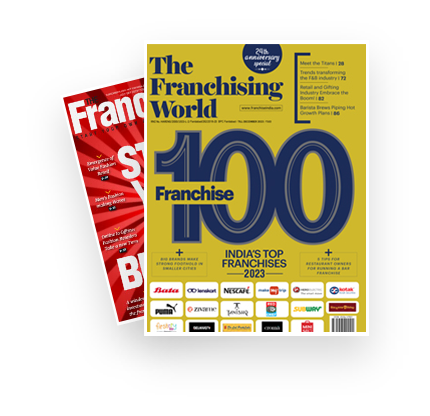
Pioneering the footwear retail franchising concept in India, Liberty Shoes is one of the eminent footwear brands for the past over 50 years. In an interview Anupam Bansal, Director, Liberty Shoes Ltd shares his success via franchising and the current growth of organised footwear sector.
Neha Gohil (NG): Share with us the success and foundation of Liberty? What encouraged the company to take franchise route for expansion?
Anupam Bansal (AB): Liberty’s success stems from an innovative marketing approach. It is an approach that goes against the general perception of what works in the market by opening and running franchisee showrooms on cash and carry format without ensuring minimum guarantee. Liberty’s decision to go for the franchisee retail model was to tap on the local market knowledge of the franchisee and use that as a base for strengthening and broadening its retail network.
Today with around 300 exclusive franchisee showrooms in large, medium and small cities that include 15 cities in the Middle East Liberty has emerged as one of the most successful Indian franchisee chains of the current times.
Liberty was recently recognised developing the best business model for franchising across industries in the country as well as for demonstrating excellence through the successful operation of satisfied franchisees over a sustained period.
NG: What is the USP of Liberty?
AB: The only Indian footwear company that’s a family brand
NG: Liberty has recently set foot in the southern market. How many outlets are expected in the region and across India in the coming years?
AB: Liberty expects to add 100 outlets year on year across India. Of these 30 to 40 will be in South India.
NG: How many stores does the company presently, has in India? What is the ratio of franchised and company owned stores?
AB: The company currently has 400 stores in India of which 300 are franchisees and 100 are company owned.
NG: What kind of investment is required by the entrepreneur to take up a franchise of the brand in terms of money, area and time in India?
AB: Investment required: more than Rs 15 lakh; Area required: Over 600 sq. ft; Time required: Around 20 days to renovate.
NG: What is the expected ROI and the break even period of your brand?
AB: ROI: 25 per cent and Break even period: Within one year
NG: What is the eligibility factor for Liberty for choosing the right franchise partners? Is it essential for the entrepreneur to have a similar background?
AB: They should be young and contemporary in their outlook, have keen interest in global footwear fashion, experience/understanding of retailing but not necessarily footwear retailing, capacity to invest around Rs 15 lakh and own more than 600sq. feet showroom space in a prime location in a potential market. We do not operate on a minimum guarantee model.
NG: What kind of competition do you face? How do you manage to handle the competition?
AB: The competition is more from the unorganised sector. We manage to stay ahead of the competition by adding continuously updating our designs taking clue from the latest global trends.
NG: What according to you is the present development in footwear retail franchising in India and what percentage of the industry is shared by organised and unorganised players?
AB: The major challenges that Indian Footwear Retail faces today include:
- Retail presence: Till recently, most companies invested in own stores as the means to grow and expand. With commercial rents increasing in last few years, capital required for expansions was a bottleneck.
- Credit Management: Brands that had no local presence, but preferred the third-party retail route had to face the challenge of receivables, often the credit period as high as 120 days.
- Brand: Many of the leather firms are SME’s, have great experience in trading and vendor management, but completely lack brand building experience. Even when attempts were made, they lacked focus and consistent efforts, thereby diluting the impact.
- Low IT investment: Except the major leather manufacturers, none of the companies had an ERP connecting POS data so as to effectively manage inventories. It was not common to have round the year discount offerings to get over the inventories.
The Indian footwear retail market is dominated by the unorganised sector which has an 80 per cent market share.
NG: How would you compare the current footwear retail scenario to the times when you started the brand? What difference have you noticed in the consumer’s buying behavior?
AB: There has been a shift from sellers to buyers. When we started, we focused more on the core products. Buyers are today a lot more aware, a lot more particular and a lot more demanding. The net has made them savvy about the changing trends and a globalized lifestyle has fuelled demand for globalised approach to fashion from footwear brands.
In the current scenario the need is for customer centric marketing which focuses on understanding the problems, concerns, needs and wants of your customer not yours. It assumes nothing and seeks to gain insight into the concerns of your potential customer, leading to a mutually beneficial business relationship and a well-satisfied customer. It recognizes the sale is the natural result of forging a solid relationship built on listening and problem solving, not forcing someone to buy. It begins with building customer rapport and ends with a lasting business relationship.




